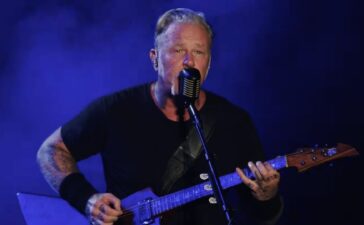Metallica and AC/DC rolling into town is expected to boost Sydney’s economy by $90m as businesses brace for massive demand.
Sydney is gearing up for one of its biggest economic jolts of the year, with new NAB analysis showing the arrival of Metallica and AC/DC will inject an extra $90 million into local businesses across ten days.
The two heavyweight acts, both returning to Sydney for the first time in more than a decade, are predicted to drive spending in the CBD, inner suburbs and the Accor Stadium precinct up to an estimated $424 million – a 26% increase on the usual $334 million spent in the same timeframe.
Metallica will kick off the run with their only Sydney show on Saturday 15 November, followed by AC/DC’s two stadium dates on Friday 21 November and Tuesday 25 November. With tens of thousands of fans expected at each gig, the flow-on effect for hospitality, retail and accommodation is expected to be pretty substantial.
NAB Executive Small Business Krissie Jones said the arrival of the back-to-back shows marks another major moment for Sydney’s event-driven economy. “Music makes Sydney go round. Last week it was Oasis. Now it’s Metallica and AC/DC and then Lady Gaga just before Christmas,” she said.
“It’s been more than a decade since Metallica and AC/DC played in Sydney and having both in quick succession will supercharge business activity.” She added that “concerts like this aren’t just cultural highlights, they’re economic powerhouses,” highlighting the sharp forecasted increase in spending across the city.
The biggest rises in spending during AC/DC and Metallica’s visits to Sydney are expected in general merchandise, which could surge by up to 131%, along with an 81% spike in accommodation spending. Bars and pubs could see a 49% jump (rock and metal fans do often love a beer), fast food up 34%, and restaurants up 24%.
Across the three shows, more than 210,000 people are expected to pass through the precinct. “That’s millions of dollars going to local businesses. There’s also flow on benefits – more shifts for casual staff, more orders for suppliers and a boost in confidence across the sector,” Ms Jones said.
$90 million in spending across ten days is no small change, and it’s a reminder of the constant and ever-growing role live music plays in the city’s financial heartbeat. Here’s hoping local, state, and federal governments take note of this when it comes to supporting artists and live music venues in the future.










